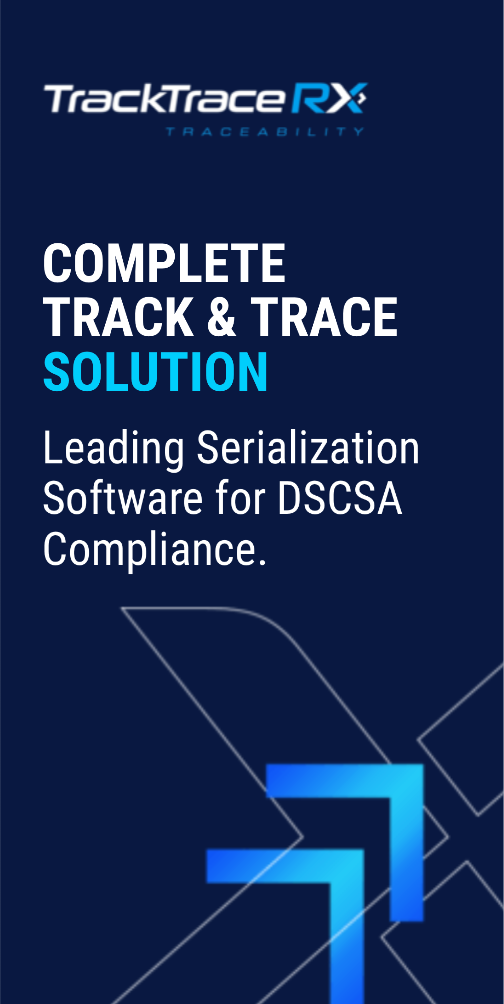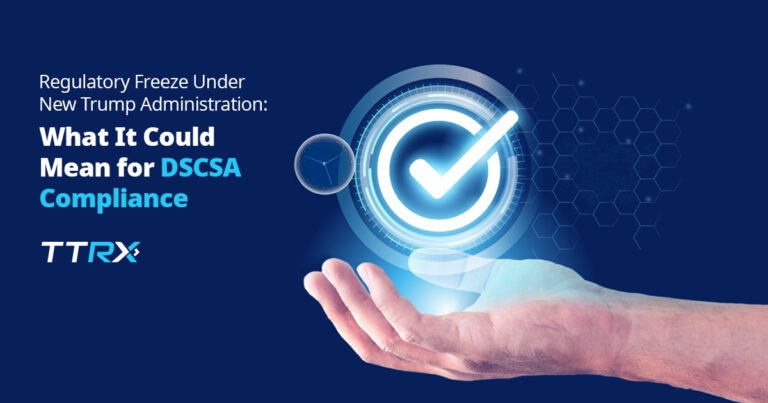The FDA recently released draft guidance to better help trading partners in the pharmaceutical drug supply chain understand exactly how the waiver process, including exemptions from the DSCSA of 2013, will operate.
The goal of the DSCSA has been to build a system that identifies and traces the pharmaceutical distribution process in the United States. This is also set to establish the process for which a distributor, manufacturer or repackaging facility can request a waiver from applicable laws. Considering that every aspect of the DSCSA is scheduled to be complete and fully implemented by 2023, addressing concerns on the waiver process now helps to facilitate a smoother transition for the trading partners and vendors that are directly affected.
What Appears in the New Draft Guidance?
The document, titled “Waivers, Exceptions and Exemptions from the Requirements of Section 582 of the Federal Food, Drug and Cosmetic Act Guidance for Industry” is only 8 pages long, but clearly outlines when waivers and exemptions are allowed under the law, and the process for submission and review.
The draft notes that under Section 582(a)(3)(A) of the FD& C Act that the FDA is required to issue a guidance that the United States Secretary of Health and Human Services can grant waivers if the requirements of the DSCSA “would result in an undue economic hardship or for emergency medical reasons, including a public health emergency declaration pursuant to section 319 of the Public Health Service Act.”
The guidance outlines the three types of waiver requests that will be accepted by trading partners.
- A waiver of the section 582 requirements is warranted because compliance would foreseeably result in undue economic hardship or is deemed to be appropriate for medical reasons.
- An exception to section 582 requirements may be requested when the container or packaging is accepted as being too small to allow labeling with sufficient space for all the proper identifying criteria and information necessary for compliance.
- An exemption to the products or transactions regarding section 582 requirements if it is seen as necessary for maintaining public health or is determined to be otherwise appropriate.
Additionally, we see that the document also states that the FDA has the authority to establish exceptions and exemptions from the stated requirements of section 582 as it sees fit. Trade partners who have been uneasy about the full implementation of the DSCSA will appreciate the fact that the FDA can use this authority at any point that it feels it is necessary to address unforeseen and widespread issues that affect a large segment of the industry as a whole.
This authority is especially advantageous from the perspective of the FDA, considering the time and resources that can be saved by preventing the domino affect of waiver and exemption requests that could accompany a change in the industry that has a major impact on all players.
What’s Needed to Request a Waiver?
Any authorized wholesale distributor, manufacturer, dispenser or repackaging facility can request a waiver or exemption from the section 582 requirements. The draft guidance serves as resource for agencies who qualify for these exemptions by providing details of the complete process and what information must be presented at the time of the request. Having this information now will help streamline the potentially time-consuming exemption process and help to ensure that claims are not denied based on incomplete or inaccurate details at the time of submission.
When submitting a request for a waiver, here is the information that will be required to make a determination.
- The complete identity of the trading partner that would be included in the waiver or exemption, including the agencies full name and complete contact information for one individual that will serve as a point of contact between the agency and the FDA should questions or other matters arise.
- A complete description, including the national drug code number, of the products and/or activities that will be covered under the waiver or exemption.
- Which requirements of section 582 the agency is seeking a waiver or exemption from.
- The effective date range of the requested waiver or exemption.
- A clearly composed statement that outlines the valid reasons why the FDA should consider the request. When submitting this request, keep in mind that only 1 waiver or exemption is permitted per supporting document. Additional requests will need to be filed independently.
How the New Draft Guidance Helps Define the Waiver Process for the Future of the DSCSA
While we still have a few years until complete implementation, the new draft guidance provides a solid foundational understanding of the waiver and exemption process as it stands today. In this industry, we all know that things change and that the waiver process as it’s defined today may or may not prove effective for the future of the industry.
To help streamline the waiver and exemption process and keep the focus on the core principles of the DSCSA, the FDA says that it intends to review waivers and exemptions that currently stand and are valid on a schedule of every 2 years. This includes waivers that are valid “until further notice” and those that have an expiration date that is 2 or more years past the initial effective date and renew them as applicable. This commitment by the FDA helps to lessen the burden of requesting follow up reviews on agencies.
With information about the waiver process, how a request should be initiated and the process for determination and follow up being so clearly outlined, hopefully this draft guidance serves as reference and answers many of the questions that those in the industry have about section 582 requirements and under what circumstances a waiver or exemption stands as a valid request.
With these standards set in place, one of the biggest hurdles in the final implementation of the DSCSA has been addressed. From here, the next few years that bring us closer to complete implementation should be smooth sailing.
About TrackTraceRx Suite
Other solutions on the market today are totally fragmented by only providing one piece of the puzzle. Pharmaceutical companies today are stuck subscribing to multiple services, accessing different companies for support and paying thousands of dollars to integrate different systems. The TrackTraceRx Suite is a game changer by combining the TrackTraceRx Traceability Solution, a ERP, and a Commerce Platform completely integrated out of the box. This eliminates having to deal with multiple support, feature services and integration costs.





